What can be done from the speaker from the phone. Homemade speakers for your phone. Column in plywood enclosure
Hello dear radio amateurs, guests site. I present to your attention an article on how do-it-yourself speaker for your phone. Here's the simplest solution that uses a minimum of detail and maintains good sound quality. You can connect a phone, mp3 player, laptop, etc. to this column.
The figure on the left shows a page diagram of a low (audio) frequency amplifier ULF, made on 2-channel, stereo microcircuit TDA7050 connected in a bridge circuit, i.e. the output signal is taken by one speaker from 2 channels simultaneously, hence the increased output power of the amplifier. Principled e-mail scheme amplifier is available by downloading free video tutorial.
The main feature of the used microcircuit is economy and low-voltage power supply, minimal, note 1.6V; the maximum is 6V, i.e. one telephone battery at 3.7V is more than enough (instead of a whole package of as many as 3 pieces in the case of TDA2003 and the like, where U pit is 12V. And how to charge? Each one in turn or assemble a 12V charger).
It's a completely different matter - I connected the speaker to the phone from which the battery was removed, and let it charge, and the battery level is always visible on the display!

The circuit is soldered by surface mounting - the simplest and fastest way without manufacturing a printed circuit board. But there is also a minus that reduces the reliability of the device, namely, if one wire from the speaker is soldered to the 6 and 7 legs of the MS (see the diagram), then several wires plus the shield of the signal wire are soldered to the 4 or 5 legs. This is the difficulty: you solder the next one - the previous one is soldered off. If you collect the wires in a twist and solder to one leg, then a short circuit to the neighboring ones is possible. In addition, due to the thickness of the twist, the thin leg of the MC does not withstand the rigidity of the twist and bends at the slightest tilt, as a result, a short circuit is possible. How to avoid this, see. The video tutorial shows the sequence in which to assemble. In general, the ideal option is to solder one wire to each leg of the MS.

Used in construction chip TDA7050(in DIP-8 package) does not require installation on a heatsink, this is very important for portable speaker... After all, the heat sink is a rather large part, and the space in the case is limited. And you will have to fix it somehow.
A few words about power. Even an average volume is quite enough for individual listening, and if you turn on the speaker at full volume, then the music and lyrics are clearly audible outside within a radius of 8-10 meters even in windy weather, see the video. Evaluate the performance of the speaker in the field, its volume, sound quality, ease of use, portability. This is especially true for children who are fond of sports, lovers of cycling and outdoor activities.


The microcircuit (MC) is also available in a more compact form: the SOP-8 package type. The key, relative to which the legs are counted, is a point on the body near the 1st pin or a chamfer along one of the sides. If you look closely, you can see it. It is very difficult to work with an MC in this performance due to its small size. The eye strain is quite sensitive, and experience and precise movements of the soldering iron are also required. I really do not advise beginner radio amateurs to use the MS in the SOP-8 case, besides, it was noticeably warming up during operation - I had to make a heat sink from an aluminum sleeve from an electrolytic capacitor and glue a drop of glue to the MS. Photos are posted to inform you that this option is also possible. Do not repeat it. No need for unnecessary difficulties.

Speaker- small size, coil resistance or impedance 8 Ohm, 1W, 1GDSH-9; 8 Ohm, 2W, 0.5GDSH-2; 8 Ohm, 3W, 1GDSH-6; broadband 8 Ohm, 3W, 3GDSH-7 or Chinese analogue 8 Ohm, 3W, YD103-04; as a last resort rectangular 4 Ohm, 3W from Genius computer speakers. It is the speaker that determines the dimensions of the future speaker, it should be compact, lightweight, easy to use, simply attached to a belt or belt.
The case is best made do it yourself... I decided to make it out of 3 mm plywood and varnish it. In the manufacture of the case, I used desktop woodworking machine. Mini circular... You can solder anything and how you like, but the finished look of the structure is nevertheless given an aesthetic body, the parts of which are made on a machine, and not manually with a jigsaw or a hacksaw. Although ... you can manually start.

Resistor- R1 adjusting. Used to change the volume and disconnect the power supply. It is advisable to use small resistors such as SPZ-3 or SPZ-4vM from 10 kOhm to 47 kOhm. SPZ-3 with a switch (one pair of contacts) requires installation on the board. Time consuming, but worth it: on the board you can place an input blocking capacitor C1, a mini-connector for connecting a battery, a smoothing power capacitor, low-pass filter parts, an LED limiting resistor, the ULF microcircuit itself, etc. Over time, as a rule, there is a desire to improve and add new features to the design. Resistors of the type SPZ-4vM with a switch (two pairs of contacts) and are fastened with a nut into the hole in the case. It's much easier. However, the overall dimensions are larger, and the handle will protrude beyond the column. You can do without an adjusting resistor, then the volume will have to be changed in the mp3 player or in the phone.
As for the battery, I would like to note the following: it will fit almost any old mobile phone. I used a MOTOROLA C350, it is also a charger after minor modifications.
Battery capacity 800 mAh (the higher this figure, the longer the amplifier's operating time). One charge of the column accounts for 3-4 charges of the mp3-player of this model.
The battery is connected using a micro-connector. You can make it yourself. The result is an extremely durable, reliable miniature connection. It is made from the components of widely used connectors. A special feature is that the externally detachable connection looks like a solid wire with practically no thickenings. The heat shrink tubing additionally squeezes the contacts (one in the other). It takes effort to open. You can see how the connectors work. The video tutorial shows their use when connecting the speaker and battery. Such connectors can be successfully used in any electronic equipment.

| Maximum output power | (Usup = 4V) | 1 Watt |
| Minimum supply voltage | 1.6V | |
| Maximum supply voltage | 6 in | |
| Maximum input voltage | 50 mV | |
| Consumption current | (Uin = 0) | 3.2 mA |
| Maximum input current amplitude | 0.5 A | |
| Harmonic distortion factor | (Pout = 50 mW) (Pout = 0.1 W) (Pout = 1 W) |
0.1% 0.5% 8% |
| Gain | 32 dBA | |
| Frequency Response Range | 50 Hz - 18 kHz | |
| Signal to noise ratio | (Pout = 1 W) | 60 dBA |
| Optimal load resistance | 8 ohm |

After downloading the video tutorial, you will find out in what sequence to assemble the ULF, which tool is better to use, and you will be able to visually see the technique of performing the work. By repeating the whole sequence of actions with me, you will save precious time and quickly achieve what you want. I wish you creative success. And good luck everyone
Hello dear readers of my blog, this time the article will not be entirely in the topic of the site, but still quite useful. Now I will tell you how you can do it yourself ...
Hello dear readers of my blog, this time the article will not be entirely in the topic of the site, but still quite useful. Now I will tell you how you can make speakers for your phone with your own hands or just portable speakers. There are times when you need to organize music, say in nature, naturally you will not find 220v sockets, of course, if you have not brought a diesel generator with you. Personally, I needed to make such a modification of the speakers in order to take them with me on the horizontal bars. I used to order portable acoustics for myself on the Internet, in general I liked it, but it already seems that it does not play enough. My purchased speaker was the divoom i-tour 20, which I was talking about.
In general, the device has a good volume and is very strong, despite its small size. But now let's move on to creating something more powerful.
What you need to work:
And so here is the photo that I used, now we will consider in detail each element of the photo.
1. Screwdriver... I think you will find such an instrument in your home, because I cannot imagine life when there is no instrument at home. Therefore, with the search for this item, you simply should not have any problems.
2. Battery... Well, here you can already use any, the main condition is the voltage in it 12v. This is where a question should arise, since I was looking for one for a long time, I even had thoughts of buying a car. But everything is much simpler. This is the battery for the uninterruptible power supply. They are used for computers if the current in the outlet is lost. You can find it in computer stores. But I was too lazy, I ordered through the online store, where everything is for computers. My battery is 12v, its capacity is 9Ah. If the money allows you can take it with a larger capacity.
3. Wires... As you can see, I have it double, so look for the same, or take two single ones. But I would like to note that my wire was thin, it is better to take a thicker one, since this may not stand it.
4. Loudspeakers... The most common computer speakers that can be found in any computer store. I have had them in a box for many years, so I decided to find a use for them. Well, the main thing here is to take not very powerful ones, since the electricity in the battery is not rubber, so take the speakers that your battery will pull. Personally, after opening it, 3 W is written on the speakers, that is, the total power is 6 W. In principle, this is sufficient.
5. Nippers... In the process of alteration, it will be necessary to cut the wires a little, so you need wire cutters, not to gnaw the iron with your teeth. Such a tool may not be as common as a screwdriver, but still. If it's really tight, then you can cut it off with a knife, the wires are thin there.
Well, in addition to this, you will need a little care so that you do not accidentally cut the wrong wires. In general, now you can move on to the work itself.
How to create speakers for your phone:
If you have prepared everything you need, then let's make speakers for the phone. To begin with, we only need a column with a switch, since it is in it that the transformer is located. And we don't need the second one at all, so if the connector disconnects, remove it. And put the main speaker on the table.
If your front part is covered by some panel, then it is better to remove it, since under it there may be hidden screws that keep the speaker closed. But don't break off if it doesn't. You can have another case, where all the screws are from the back panel.
After you find all the fasteners, unscrew the screws and open the speaker, but only carefully, in my case it did not open too much, the wires inside may be short. I opened this picture a little, the next one will see how much the maximum it opened.
As you can see, it did not open very wide, so it was difficult to photograph the insides of the speaker. But you can see how in the center there is a whole bunch of wires. We are only interested in the number 1.
1. Transformer. It converts the current from 220v to 12v, that's just what we need to connect after it, just what we need will be. In my case, blue wires came from him, and all the rest in the case were black.
So the column opened wider when I cut the wires from the transformer, in this picture I marked it with the letter T. I recommend cutting the wires in the middle, if you ever decide to remake the speaker back, then at least you can twist the wires, I personally did so. It is best to insulate the wires from the transformer with electrical tape. And for now, let them stick out from the board.
Next, we prepare the wires with which we will connect the battery. It is necessary to cut off the insulation and then connect it first to the speaker, and then to the battery, just carefully, do not close the clamps with your fingers, because then there will be a loud mate for the whole house. Well, in principle, that's all, but do not close it, first check for operability. By the way, it is not necessary to observe the polarity, even if you do the opposite, the speaker will just play inside the case and the sound will be a little quieter. And if you guess right, it will be generally gorgeous.
And now we carefully turn it on and voila, the column is working. Then insulate the joints inside the case and you can twist and assemble.
By the way, you can't see what works in the photo, so I turned off the flash, only the quality became poor, I am writing an article at night there is no lighting.
Done, you can clamp the wire with the lid with the speaker, it should not break, well, or twist this edge a little looser. Now your task will be to constantly charge the battery. If you take everything with the same parameters as mine, then there should be enough hours for 10 work.
By the way, my wires that I pulled to the battery were in a varnish winding, I could not clean it with a knife, so I just set the wire on fire. All right, good luck to everyone, I hope I helped.
Updated (10/05/2013 at 19:45).
Still, I decided to continue the article a little, a photograph of a house is certainly good, but there is always a risk that you may be deceived. This is not part of my goals, so I decided to post another photo where the speakers work, but this time on the street. The very idea to take a photo came quite spontaneously. As usual, I got ready to go to train, went out into the street, came to the horizontal bars near the house, worked out, went to the uneven bars and decided to turn on the music. And so, just between the approaches, this idea came to me. Therefore, here is another photo confirmation that everything is described correctly in the article and what I recommend really works.
As you can see, there is not even a copyright leaf, as in the previous photos. Here's the only thing, I want to apologize for photographing on the phone, but it was already dark outside, so the quality leaves much to be desired. Now the article is definitely over.
A very simple and quick way to make a very loud speaker for your phone. The most important component will be a sound amplifier based on a PAM8403 microcircuit, this amplifier can be purchased on aliexpress for 30 rubles, all links will be below.
For manufacturing we need:
Materials:
1. Any jar with a cream.
2. Battery (3.7 V).
3. Switch.
4. Headphone cable.
5. Mini sound amplifier.
6. Battery charge controller.
7. Two speakers.
.
.

Tools:
1. Soldering iron (solder, flux ...).
2. Glue gun.
3. Stationery knife.
4. Pencil.

We will assemble the column according to this scheme, which is powered up to 5 VOLTS (it is no longer possible), but this scheme lacks a controller, you can do without it, it does not play a big role since the telephone battery already has a built-in controller.

Let's get started.
To begin with, take a jar and mark where the switch will be located in the future.

We cut it out with a clerical knife.

Since our speaker will have two speakers, we will place them in front and behind. We mark a hole for the speaker on the bottom of the can.

We do the same in front.

Cut out the holes for the speakers in the front and back.

We also make the last two holes for the cable and for micro-usb charging.

So, with all the holes we figured out, let's proceed to electronics... But first, we glue the speakers into the case.

First, let's push the cable through the hole.

Solder the wires from the speakers to the board, do not confuse the polarity.

We strip the cable from the mini-jack and solder it to the board. Common in the middle, left and right on the sides.

We solder the contacts from the battery to the controller, on the controller itself there is already a markup where is plus and where is minus. We solder the switch into the gap.

We solder the power wires from the controller to the plus and minus of the amplifier.

As a result, we got such an electrical circuit, which we place in a place convenient for you.

We glue the controller under the bottom of the battery, and the battery itself on the top, and the amplifier can be glued in a place convenient for you.
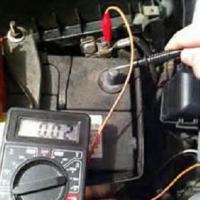 Simple tips on how to test a transformer with a multimeter for operability
Simple tips on how to test a transformer with a multimeter for operability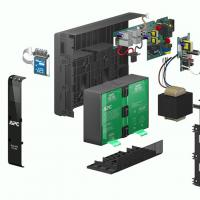 Repair of uninterruptible power supplies Commercial proposal for the repair of an uninterruptible power supply
Repair of uninterruptible power supplies Commercial proposal for the repair of an uninterruptible power supply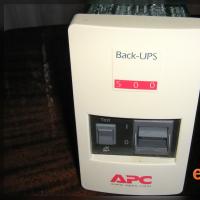 Do-it-yourself UPS repair: wizard's advice Repair of apc uninterruptible power supplies
Do-it-yourself UPS repair: wizard's advice Repair of apc uninterruptible power supplies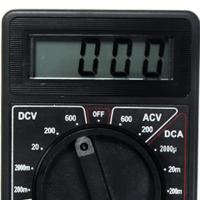 Repair of a multimeter m 830b does not show an ohmmeter
Repair of a multimeter m 830b does not show an ohmmeter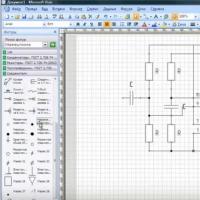 Programs for drawing electrical circuits
Programs for drawing electrical circuits Drawing boards in Sprint-Layout correctly from the first steps
Drawing boards in Sprint-Layout correctly from the first steps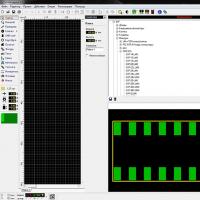 What program can open the file
What program can open the file